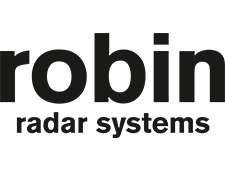ARENSO: Arenso Leads Offshore Wind in the Baltic North
Arenso’s Arctic edge comes in the form of unrivalled experience in offshore wind for extreme conditions. But Business Director, Esa Holttinen tells Energy Focus that the waters in the northern Baltic are less challenging when you partner with the best.
Offshore wind is taking on a new frontier. While much of Europe has raced to develop mega-scale offshore wind farms in the North Sea, the Nordics and Baltics have often been viewed as a more difficult, perhaps even undesirable, environment for such investment. Challenges like harsh winters, icy waters, and limited grid access have cast a long shadow over development potential in regions like Finland, northern Sweden, and Estonia. But what if those perceived obstacles are, in fact, untapped advantages?
In Finland, homegrown energy consultancy Arenso is proving exactly that. With a core specialism in engineering offshore wind projects in Arctic and semi-Arctic waters, Arenso is quietly redefining what it means to build offshore wind in challenging climates. Drawing on experience from its flagship involvement in the Tahkoluoto offshore wind farm—Europe’s first offshore wind farm built for icy conditions—Arenso is now leading the charge in a new era of northern renewables.
“Geographically, we are focusing on the northern Baltic Sea region – Finland, the Baltic states, and the northern part of Sweden (everything north of Stockholm), especially the ice infested waters,” says Esa Holttinen, Business Director for Offshore Wind at Arenso.
TAHKOLUOTO ADVANTAGE
The Tahkoluoto project has long served as a proving ground for Arenso’s engineering acumen. With shallow waters, variable seabeds, and seasonal sea ice, the project has tested and sharpened the company’s understanding of how to work smarter in complex conditions.
“We are leveraging on the knowhow and innovation that we have gathered through our Tahkoluoto project and elsewhere in Finland where there are special conditions in soil and ice,” Holttinen explains. “The load combinations for ice, wave, and wind are interesting, and that is a strong focus area for us.”
What makes Arenso’s offering unique is its ability to translate hands-on experience into tangible, technical value. Rather than simply providing consultancy, the company embeds itself into the supply chain, working in continuous communication with marine contractors, foundation manufacturers, turbine suppliers, and regulatory authorities.
“We try to encourage our clients and potential clients to understand the difference between us and other consulting engineering firms,” says Holttinen. “We have a very close relationship with the best suppliers thanks to our own Tahkoluoto project, which is ongoing.”
With permitting processes underway and a full build-out anticipated by the end of the decade, the Tahkoluoto extension remains a crucial piece of Arenso’s future. “We are focusing on the missing parts of permitting, including the connection of overhead 400kv connection line,” Holttinen says. “Our goal is to have all the permits in place by the end of 2026.
“After that, the market conditions play a big part, and owners must make decisions on construction preparations and pre-investment. The construction of Tahkoluoto is expected to take place at the end of this decade or early in the next decade, but it is all dependent on market conditions,” he adds.
BEYOND FINLAND
Arenso is not limiting itself to Finnish waters. The company is partnering with Utilitas Wind on the development of the Saare-Liivi offshore wind park off the coast of Estonia. Project Director Manu Grönlund is leading Arenso’s work on this 80-turbine development in the Gulf of Riga.
“The project is going ahead. We are completing basic design works and it is a very interesting project. There are many synergies for our clients and us,” Grönlund confirms. “There are many aspects where the collaboration is very beneficial.”
Scheduled for construction around 2029 or 2030, Saare-Liivi will serve as a new benchmark for offshore wind development in the Baltics. Arenso’s involvement once again underscores its value as a regional expert in foundation design, environmental planning, and Arctic engineering.
“We expect to be working on relatively early stage, or development stage, projects that are heading towards construction or auction,” Holttinen adds of the company’s project pipeline. “We are supporting clients with issues like layout optimisation, foundation concepts, soil studies, Capex and Opex estimates, and similar.
“Project owners are getting prepared for auctions, and everything depends on those auctions. We are supporting the client to get prepared for the auction and we are trying to help them with optimisation of technical design in a way that their tender is competitive as possible in those auctions.”
COLD, BUT COMPETITIVE
Conventional wisdom suggests that Arctic and sub-Arctic offshore sites are expensive and risky. Holttinen argues the opposite.
“Arctic conditions are challenging? Yes and no,” he says. “Our sites are located in shallow waters, closer to shore and ports. We have no issues with tides and tidal currents; we have less severe conditions with salinity of water and corrosion issues.”
Indeed, when comparing overall costs between Baltic Sea sites and those in the North Sea, Arenso often finds a clear economic edge. “We do have a lot of advantages and that is reflected in Capex and Opex numbers,” Holttinen says.
“A major challenge is to make clients understand that these waters are not as scary as they think. Many people hear about ice and they immediately think of challenges and costs. But we work hard every day to explain that it is not the case, and you can potentially make projects cheaper in these waters compared to some North Sea locations.”
FUTURE-READY
As large international developers focus their attention on markets with generous subsidies and established CfD frameworks, Arenso believes the Nordic-Baltic region offers something more enduring: technical viability and long-term potential.
“The big international players are focusing on markets where subsidies are available in one form or another. There, we have a disadvantage in Finland and Sweden,” Holttinen explains. “But we need to keep in mind that this market always has ups and downs, and they will always come and go.
“It takes many years to develop an offshore wind project so we tell our prospective clients that they need to be patient and they need to work on the right issues at the right time so that when the market looks promising they are as ready as possible to move ahead with any project.
“Selling projects or putting them on the shelf just now is shortsighted. It makes more sense to focus on the longer-term, keeping in mind that the need for offshore wind and the need to reduce greenhouse gas emissions and the need to improve energy independence has not gone away.”
The company’s work is not without challenges. Rising costs in turbine manufacture, raw materials, and financing are creating headwinds across the sector. Grid congestion, particularly in Finland, presents additional hurdles.
“There is grid congestion and that will delay some projects, but the projects are delayed anyway because of market conditions,” Holttinen notes. “That leaves Fingrid with more time to come up with solutions to connect more offshore wind to the grid.
“The tricky problem is how quickly demand for electricity will grow in the future. There is a lot of talk about big hydrogen productions projects, green steel, and other initiatives but the range between the most optimistic and pessimistic growth scenarios for electricity consumption is large.
“Currently, market price for electricity is too low to make onshore wind profitable. We need to have a lot more demand for electricity to bring up the power price to a level where investments in wind power in general makes sense. When that happens is a tough question.”
A UNIQUE POSITION
As the offshore wind industry matures, experience matters. Arenso’s ability to combine technical understanding with real-world execution sets it apart.
“The key is that you have some experience of building offshore wind in Finland and you know which parts are difficult and which parts are hard,” says Grönlund. “International investors who have an interest in the Baltic Sea have an interest in what we have done, and we also pop up on the radar. This is very good for us.”
Still, Arenso’s pipeline is active and expanding. “We are always looking for new opportunities and have a number of interesting projects that are under the radar for now,” says Grönlund. “These potential assignments are across Finland, northern Sweden and across the Baltic States.”
With Tahkoluoto progressing, Saare-Liivi taking shape, and new opportunities on the horizon, Arenso is well placed to lead the northern offshore wind transition. The consultancy may not be the biggest name in Europe’s renewable energy landscape, but in the cold waters of the Baltic North, it is undoubtedly one of the most experienced.
“We have partly already achieved our goal of being the recognised leader in Baltic/northern Nordics,” Holttinen reflects. “The enquiries we get from the market are very strong right now. I have been very surprised at how interested many prospective clients are in our special skillset.”
For a region once dismissed as too harsh for development, that skillset may be exactly what’s needed to unlock its full offshore wind potential.


